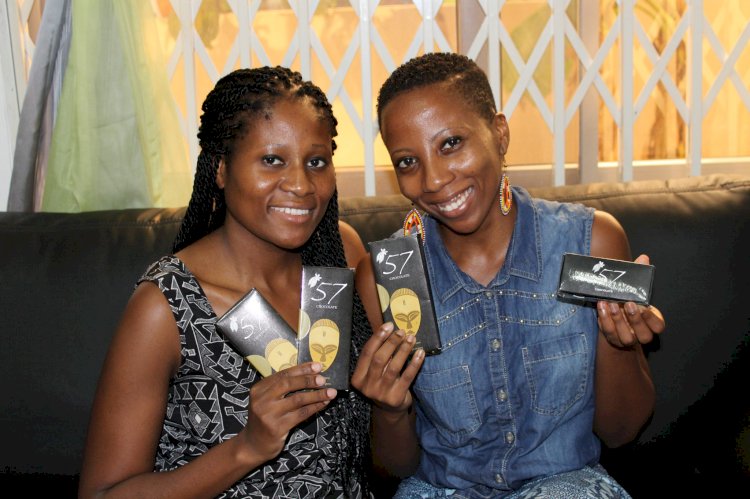Meet the Two Ghanaian Sisters Making Waves in the Chocolate Market.
Ghanaian sisters making their countrie’s abundant natural resource work for them.

When it comes to the production of Cocoa, Ghana is not just the second biggest in Africa, but also the second biggest in the world. Two sisters from Accra, Ghana, are taking full advantage of that.
Priscilla and Kimberly Addison have decided to launch a chocolate production factory called "57 Chocolate", adding market value to Ghana's cocoa beans.
Cocoa is processed and liquefied into Cocoa Liquor. This cocoa liquor can then be further processed into two different components: cocoa butter and cocoa powder depending on the type of chocolate to be made. The cocoa liquor can also be used directly as the main ingredient of the chocolate.
Chocolates have an varying percentages of cocoa in them. Most chocolates are made up of 55% cocoa, with dark chocolate being made up of 70% cocoa.
The two sisters manufacture their own cocoa, making it into choclates for locals. They got their inspiration from Swiss choclate maker, Maison Cailler while working in Switzerland, naming their company after the year Ghana gained independence.
The year 1957 - 57 Choclates.
The sisters said:
When you hear chocolate, you automatically think Switzerland. You don’t think Ghana... So if the Swiss are doing it and they don’t even have the resource there, then we should be able to do it because we have the resource.”
READ ALSO:
Asantehene animate Independence Day celebration
Cocoa is the chief agricultural export of Ghana and Ghana's main cash crop. In Africa and the world, Ghana's exportation of coca is second only to Ivory Coast's. Together the two countries hold over two thirds of global supply.
900 thousand tons of beans were produced in Ghana in 2018/2019 season and the production level has never dipped below 700 thousand tons in the past five years and although these factors are huge, they do not translate to chocolate production levels in Ghana.
Choclate requires high manufacturing costs and steady power supply, it also requires large amounts of imports and key choclate imgredients (sugar, milk powder, nuts and other flavours).
Chocolate is also very costly to ship. Cocoa butter has a low melting point of 34 degrees so choclate has to be exported in cold storage containers to consumption markets, leading to a dramatic increase in already exorbitant shipping costs.
These along with other systemic barriers prevent the chocolate industry in Ghana from reaching even half of it's full potential. As the country mostly turns to international suppliers for to satisfy domestic choclate demands.
The two sisters decided to create a company to satisfy local demands for locally made chocolate.





































